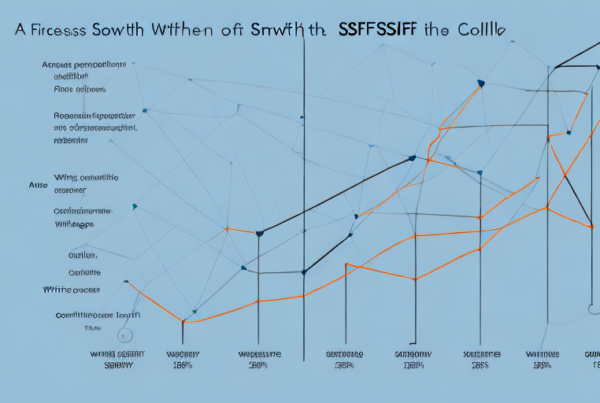Retirement planning has become an essential aspect of financial planning. More than ever, individuals are becoming financially literate and taking control of their retirement funds. One of the popular options for retirement planning is a Self-Managed Super Fund (SMSF). However, with several SMSF businesses in the market, choosing the right provider to cater to your retirement needs can be challenging. In this article, we will provide tips for selecting the right SMSF business.
Understanding SMSF and Its Importance in Retirement Planning
Before we delve into tips for choosing the right SMSF business, it’s crucial to understand the concept of SMSF and its importance in retirement planning. SMSF is a self-managed superannuation fund, where individuals manage their retirement savings and investments. It gives members control over their investment choices, risk management, and tax strategies. SMSF has become popular among individuals looking for investment flexibility, control, and tax savings.
Retirement planning is an essential aspect of financial planning. It involves setting aside funds to support your lifestyle after you retire from work. The earlier you start planning for retirement, the more time you have to accumulate wealth and achieve your retirement goals. SMSF is an excellent retirement planning option for individuals who want more control over their retirement investments.
What is a Self-Managed Super Fund (SMSF)?
SMSF is a retirement fund managed by members who are also trustees. Unlike traditional super funds, SMSFs have a maximum of four members. SMSF trustees are responsible for managing their investments, delivering annual reports to the Australian Taxation Office (ATO), and meeting compliance requirements. SMSF members can choose between different investment options, including Australian and international shares, property, fixed income, and cash.
One of the significant advantages of SMSF is that it provides members with greater investment flexibility and control. Members can tailor their investment strategies to suit their individual needs and risk appetite. SMSF members can also invest in a broader range of investment options, including direct property, which is not available in traditional super funds.
Benefits of SMSF for Retirement Planning
There are numerous advantages of SMSF for retirement planning, which include:
- Greater investment flexibility and control
- Access to a broader range of investment options
- Ability to invest in direct property
- Lower fees and tax savings
- Potential for higher returns
Lower fees and tax savings are other significant advantages of SMSF. SMSF members can save on fees by managing their investments directly, rather than paying fees to professional fund managers. SMSF members can also take advantage of tax strategies, such as franking credits, to reduce their tax liability and increase their retirement savings.
Another advantage of SMSF is the potential for higher returns. SMSF members can invest in a broader range of investment options, including direct property and international shares, which have the potential for higher returns than traditional super funds.
Given these benefits, it’s no surprise that SMSF has become a preference among Australians for retirement planning. However, SMSFs require more time, expertise, and resources compared to traditional super funds. SMSF members must have a good understanding of investment principles, compliance requirements, and tax strategies to manage their investments effectively.
SMSF vs. Traditional Super Funds
Traditional super funds are funds managed by professional fund managers, where members do not have direct control over the investment decisions. These funds are suitable for individuals who do not have time or expertise to manage their retirement investments. SMSF provides members better control, flexibility, and access to a wider range of investment options. However, SMSFs require more time, expertise, and resources compared to traditional super funds.
In conclusion, SMSF is an excellent retirement planning option for individuals who want more control over their retirement investments. SMSF provides members with greater investment flexibility and control, access to a broader range of investment options, lower fees and tax savings, and the potential for higher returns. However, SMSFs require more time, expertise, and resources compared to traditional super funds. It’s essential to seek professional advice before setting up an SMSF to ensure it’s the right retirement planning option for you.
Assessing Your Retirement Needs and Goals
Before choosing an SMSF provider, it’s crucial to assess your retirement needs and goals. Some of the critical aspects to consider include identifying your financial goals, estimating your retirement expenses, and determining your risk tolerance.
Identifying Your Financial Goals
The first step in assessing your retirement needs is identifying your financial goals. Your financial goals should align with your retirement vision, such as traveling, buying a property, or starting a business. To achieve these goals, you need to understand your current financial position, including your net worth, income, and expenses.
For example, if your goal is to travel during your retirement, you need to estimate the cost of traveling to your desired destinations. You should also consider the cost of accommodation, food, and other expenses associated with traveling. By estimating your expenses, you can determine how much money you need to save to achieve your financial goals.
Furthermore, if your goal is to buy a property during your retirement, you need to consider the current property market and the cost of properties in your desired location. You should also consider the ongoing expenses associated with owning a property, such as maintenance costs and property taxes.
Estimating Your Retirement Expenses
The next step in assessing your retirement needs is estimating your retirement expenses. To estimate your expenses, you need to consider your current lifestyle, future plans, and potential healthcare costs. You should also consider inflation and other unforeseen expenses that may arise during retirement.
For example, if you plan to retire in the next ten years, you need to consider the cost of living in the future and how inflation may impact your expenses. You should also consider any potential healthcare costs, such as the cost of medication and medical procedures.
Furthermore, you should consider your current lifestyle and how it may change during retirement. For instance, if you currently enjoy dining out frequently, you need to consider the cost of dining out during your retirement.
Determining Your Risk Tolerance
Another critical factor to consider when assessing your retirement needs is determining your risk tolerance. Your risk tolerance is the level of risk you are willing to take on your investments. It’s essential to determine how comfortable you are with financial risk, as it will impact your investment decisions and returns.
For example, if you have a low risk tolerance, you may prefer to invest in low-risk investments, such as bonds or cash. On the other hand, if you have a high risk tolerance, you may prefer to invest in high-risk investments, such as stocks or cryptocurrencies.
It’s important to note that your risk tolerance may change over time, and it’s essential to review your investment portfolio regularly to ensure it aligns with your risk tolerance and financial goals.
Evaluating SMSF Business Providers
Self-managed super funds (SMSFs) are a popular choice for Australians looking to take control of their retirement savings. However, choosing the right SMSF provider can be a daunting task, with many options available in the market. In this article, we’ll explore the factors to consider when evaluating SMSF providers, including reputation and track record, range of services offered, fees and charges, and customer support and assistance.
Reputation and Track Record
When it comes to managing your retirement savings, reputation and track record are crucial. You want to choose an SMSF provider with a proven track record of meeting compliance requirements, delivering returns, and supporting clients in their retirement journey. One way to evaluate a provider’s reputation is to read online reviews and testimonials from current and past clients. You can also check if the provider has any regulatory sanctions or disciplinary actions against them.
Range of Services Offered
Another critical factor to consider when evaluating SMSF providers is the range of services offered. You want to choose a provider that offers a broad range of investment options, flexibility, and support to cater to your retirement goals. Some providers may offer limited investment options, which may not align with your investment strategy. You should also consider if the provider offers additional services such as tax advice, estate planning, and insurance.
Fees and Charges
Choosing the right SMSF provider also requires evaluating fees and charges. You should understand the provider’s fee structure, including set-up fees, ongoing services fees, and any additional charges. Some providers may charge a percentage of your account balance, while others may charge a flat fee. It’s essential to choose a provider that offers competitive fees that align with your investment strategy and retirement goals. You should also consider if the provider offers any discounts for bundled services or long-term clients.
Customer Support and Assistance
Finally, when evaluating SMSF providers, it’s crucial to consider customer support and assistance. You want to choose a provider that offers excellent customer service, access to specialists, and ongoing education and resources to support you in your retirement journey. Some providers may offer a dedicated account manager, while others may have a team of specialists available to answer your questions. You should also consider if the provider offers online tools and resources, such as investment calculators and retirement planning guides.
In conclusion, choosing the right SMSF provider requires careful consideration of several factors, including reputation and track record, range of services offered, fees and charges, and customer support and assistance. By evaluating these factors, you can make an informed decision that aligns with your retirement goals and investment strategy.
Key Features to Look for in an SMSF Business
In addition to evaluating SMSF providers, it’s crucial to look for key features that enhance your retirement planning experience. These features include investment options and flexibility, reporting and compliance support, ongoing education and resources, and ease of use and accessibility.
Investment Options and Flexibility
Choosing an SMSF provider that offers a broad range of investment options and flexibility is crucial. You should have access to a diverse range of investment options, such as shares, property, and fixed income, to cater to your retirement goals and risk tolerance.
Reporting and Compliance Support
SMSF requires annual reports and compliance requirements that can be overwhelming for individuals managing their retirement investments. You should choose an SMSF provider that offers reporting and compliance support to ensure compliance with ATO requirements.
Ongoing Education and Resources
Another essential feature to look for in an SMSF provider is ongoing education and resources. You should choose a provider that offers access to educational materials and resources such as webinars, seminars, and workshops to enhance your knowledge and skills in managing your retirement investments.
Ease of Use and Accessibility
Finally, it’s essential to choose an SMSF provider that is easy to use and accessible. You should be able to access your investments, reports, and specialists quickly and efficiently through online platforms, mobile applications, and other user-friendly tools.
Conclusion
In conclusion, choosing the right SMSF provider is a crucial aspect of retirement planning. It requires evaluating your retirement needs and goals, assessing SMSF providers in the market, and looking for key features that enhance your retirement planning experience. By following the tips outlined in this article, you can select the right SMSF provider that aligns with your investment strategy, risk tolerance, and retirement goals.




